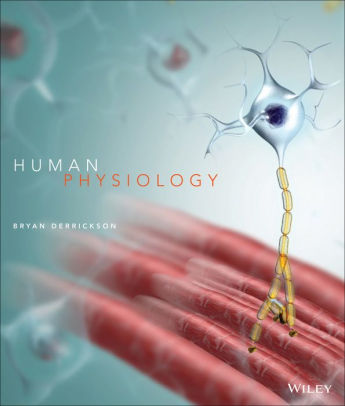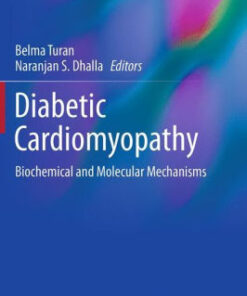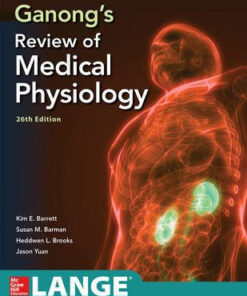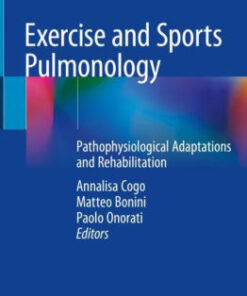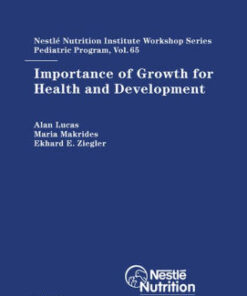(PDF) Human Physiology by Bryan H. Derrickson
$18.00
Download instantly Human Physiology by Bryan H. Derrickson. It is ebook in PDF format.
ISBN-10: 047038140X ISBN-13: 9780470381403
Preview
This is the PDF eBook version for Human Physiology by Bryan H. Derrickson
Table of Contents
1 An Introduction to Physiology 1
1.1 Physiology Defi ned 2
1.2 Levels of Organization in the Body 2
1.3 Life Processes 5
1.4 Homeostasis 5
1.5 Physiology as a Science 11
1.6 Key Themes of Physiology 14
2 Chemical Composition of the Body 19
2.1 How Matter Is Organized 20
2.2 Chemical Bonds 23
2.3 Chemical Reactions 28
2.4 Inorganic Compounds and Solutions 28
2.5 Organic Compounds 33
3 Cells 56
3.1 Components of a Cell 57
3.2 The Plasma Membrane 58
3.3 Cytoplasm 60
3.4 Nucleus 68
3.5 Gene Expression 70
3.6 Cell Division 74
3.7 Cellular Diversity 78
3.8 Organization of Cells into Tissues 79
4 Metabolism 95
4.1 An Overview of Metabolism 96
4.2 Energy and Metabolism 96
4.3 Enzymes 98
4.4 Role of ATP in Metabolism 103
4.5 Carbohydrate Metabolism 109
4.6 Lipid Metabolism 117
4.7 Protein Metabolism 118
4.8 Nutrition and Metabolism 120
5 Transport Across the Plasma Membrane 128
5.1 Selective Permeability of the Plasma Membrane 129
5.2 Gradients Across the Plasma Membrane 130
5.3 Classifi cation of Membrane Transport Processes as Passive or Active 131
5.4 Passive Transport 132
5.5 Active Transport 140
5.6 Vesicular Transport 145
5.7 Transepithelial Transport 148
6 Cell Signaling 156
6.1 Methods of Cell-to-Cell
6.2 Extracellular Chemical Messengers 158
6.3 Receptors 162
6.4 Signal Transduction Pathways 166
6.5 Comparison of the Nervous and Endocrine Systems 182
7 The Nervous System and Neuronal Excitability 187
7.1 Overview of the Nervous System 188
7.2 Cells of the Nervous System 190
7.3 Electrical Signals in Neurons 196
7.4 Signal Transmission at Synapses 218
7.5 Neurotransmitters 226
7.6 Neural Circuits 231
8 The Central Nervous System 238
8.1 Spinal Cord 239
8.2 Brain 244
8.3 Integrative Functions of the Cerebrum 260
9 Sensory Systems 275
9.1 Overview of Sensation 276
9.2 The Somatic Sensory System 286
9.3 The Olfactory System 298
9.4 The Gustatory System 301
9.5 The Visual System 304
9.6 The Auditory and Vestibular Systems 322
10 Autonomic and Somatic Nervous Systems 341
10.1 Autonomic Nervous System 342
10.2 Somatic Nervous System 356
11 Muscle 364
11.1 Overview of Muscle 365
11.2 Organization of Skeletal Muscle 367
11.3 Contraction and Relaxation of Skeletal Muscle Fibers 375
11.4 ATP Production in Skeletal Muscle 383
11.5 Skeletal Muscle Mechanics 385
11.6 Types of Skeletal Muscle Fibers 392
11.7 Cardiac Muscle 394
11.8 Smooth Muscle 396
11.9 Regeneration of Muscle 402
12 Control of Body Movement 411
12.1 Overview of Motor Control 412
12.2 Local Level of Motor Control 413
12.3 Control of Movement by the Cerebral Cortex 419
12.4 Control of Movement by the Brain Stem 422
12.5 The Basal Nuclei and Motor Control 424
12.6 Modulation of Movement by the Cerebellum 426
13 The Endocrine System 432
13.1 Overview of the Endocrine System 433
13.2 Pituitary Gland 440
13.3 Thyroid Gland 452
13.4 Parathyroid Glands 455
13.5 Adrenal Glands 457
13.6 Pineal Gland 461
13.7 Pancreas 463
13.8 Ovaries and Testes 469
13.9 Other Endocrine Organs and Tissues 469
13.10 Endocrine Control of Growth 472
13.11 The Stress Response 475
14 The Cardiovascular System: The Heart 484
14.1 Basic Design of the Cardiovascular System 485
14.2 Organization of the Heart 488
14.3 Cardiac Muscle Tissue and the Cardiac Conduction System 495
14.4 The Cardiac Cycle 506
14.5 Cardiac Output 508
14.6 Exercise and the Heart 517
15 The Cardiovascular System: Blood Vessels and Hemodynamics 524
15.1 Overview of the Vasculature 525
15.2 Capillary Exchange and Lymphatics 531
15.3 Hemodynamics 536
15.4 Control of Blood Flow 546
15.5 Regulation of Mean Arterial Pressure 552
15.6 Shock and Homeostasis 556
16 The Cardiovascular System: The Blood 565
16.1 Overview of Blood 566
16.2 Erythrocytes 570
16.3 Leukocytes 576
16.4 Platelets 577
16.5 Hemostasis 577
16.6 Blood Groups and Blood Types 584
17 The Immune System 593
17.1 Components of the Immune System 594
17.2 Innate Immunity 596
17.3 Adaptive Immunity 602
18 The Respiratory System 625
18.1 Overview of the Respiratory System 626
18.2 Ventilation 632
18.3 Lung Volumes and Capacities 640
18.4 Exchange of Oxygen and Carbon Dioxide 643
18.5 Transport of Oxygen and Carbon Dioxide 646
18.6 Control of Ventilation 653
18.7 Exercise and the Respiratory System 657
19 The Urinary System 664
19.1 Overview of Kidney Functions 665
19.2 Organization of the Kidneys 665
19.3 Overview of Renal Physiology 668
19.4 Glomerular Filtration 669
19.5 Tubular Reabsorption and Tubular Secretion 675
19.6 Production of Dilute and Concentrated Urine 684
19.7 Evaluation of Kidney Function 688
19.8 Urine Transportation, Storage, and Elimination 693
19.9 Waste Management in Other Body Systems 695
20 Fluid, Electrolyte, and Acid–Base Homeostasis 702
20.1 Fluid Compartments and
20.2 Electrolytes in Body Fluids 708
20.3 Acid–Base Balance 710
21 The Digestive System 721
21.1 Overview of the Digestive System 722
21.2 Mouth 727
21.3 Pharynx and Esophagus 729
21.4 Stomach 732
21.5 Pancreas, Liver, and Gallbladder 736
21.6 Small Intestine 740
21.7 Large Intestine 750
21.8 Phases of Digestion 753
21.9 Transport of Lipids by Lipoproteins 755
22 Metabolic Adaptations, Energy Balance, and Temperature Regulation 764
22.1 Metabolic Adaptations 765
22.2 Energy Balance 769
22.3 Regulation of Body Temperature 773
23 The Reproductive Systems 781
23.1 Reproductive Cell Division 782
23.2 Male Reproductive System 784
23.3 Female Reproductive System 794
23.4 The Human Sexual Response 804
23.5 Sex Determination and Sex Differentiation 804
23.6 Aging and the Reproductive Systems 809
23.7 Pregnancy and Labor 809
23.8 Contraception and Abortion 820
23.9 Infertility 822
